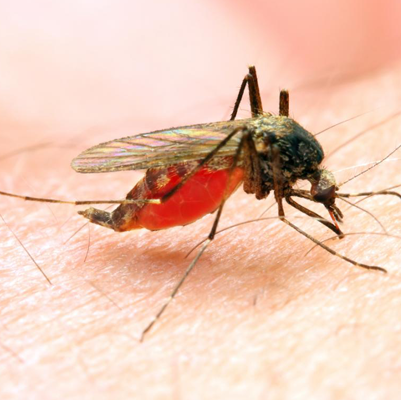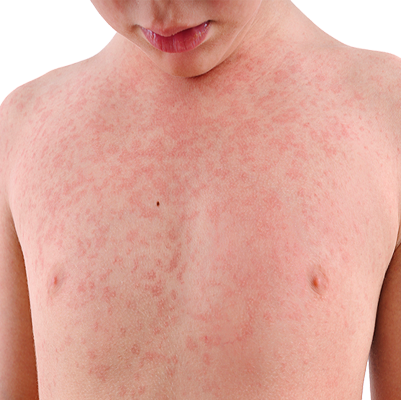Fever
Overview
A fever is a temporary increase in your body temperature, often due to an illness. Having a fever is a sign that something out of the ordinary is going on in your body.
For an adult, a fever may be uncomfortable, but usually isn't a cause for concern unless it reaches 103 F (39.4 C) or higher. For infants and toddlers, a slightly elevated temperature may indicate a serious infection.
Fevers generally go away within a few days. A number of over-the-counter medications lower a fever, but sometimes it's better left untreated. Fever seems to play a key role in helping your body fight off a number of infections.
Symptoms
- Sweating
- Chills and shivering
- Headache
- Muscle aches
- Loss of appetite
- Irritability
- Dehydration
- General weakness

Filariasis.
Filariasis – Overview (Spaks Homeopathy)
Filariasis is a tropical infectious disease caused by thread-like parasitic worms. The two main species responsible are Wuchereria bancrofti and Brugia malayi. The infection spreads through the bite of infected mosquitoes, which carry the larval form of the parasite into the human bloodstream. Over time, these worms damage the lymphatic system, leading to swelling and chronic complications.
Causes of Filariasis
-
Bite of infected mosquitoes (main source of transmission)
-
Poor sanitation and unhygienic surroundings in tropical areas
-
Repeated exposure to mosquito bites in endemic regions
-
Weak immune defense against parasitic infection
Symptoms of Filariasis
-
Recurrent fever with chills
-
Headache and general body ache
-
Skin rashes or lesions
-
Swelling of limbs, scrotum, or breasts due to lymphatic blockage
-
Thickened and rough skin (Elephantiasis)
-
Cough, wheezing, and breathing trouble in Tropical Eosinophilia
Effects / Complications
-
Permanent lymphatic system damage
-
Elephantiasis – massive swelling and deformity of body parts
-
Restricted mobility and difficulty in daily activities
-
Secondary infections in affected skin and tissues
-
Emotional stress and social stigma due to disfigurement
Homeopathic Treatment for Filariasis (Spaks Homeopathy)
Homeopathy aims to reduce swelling, control infection, and strengthen the immune system. Commonly used remedies include:
-
Arsenicum Album – for weakness, fever, and burning pains
-
Calcarea Carbonica – for lymphatic gland swellings
-
Apis Mellifica – for stinging, burning swelling with inflammation
-
Mercurius Solubilis – for ulcers and skin lesions
-
Sulphur – for chronic skin eruptions and itching

Loose motions
Overview
Everyone occasionally experiences diarrhea — loose, watery, and possibly more-frequent bowel movements. In most cases, diarrhea lasts only a couple of days and resolves on its own.
However, when diarrhea continues for weeks or longer, it may signal a more serious condition, such as:
-
Persistent infection (bacterial, viral, or parasitic)
-
Inflammatory Bowel Disease (IBD) – Crohn’s disease, ulcerative colitis
-
Irritable Bowel Syndrome (IBS) – a functional digestive disorder
-
Food intolerances or malabsorption (e.g., lactose intolerance, celiac disease)
Symptoms
-
Loose, watery stools
-
Abdominal cramps
-
Abdominal pain
-
Fever
-
Blood in the stool
-
Bloating
-
Nausea
-
Urgent need to have a bowel movement
Effects
If untreated or prolonged, diarrhea can cause:
-
Dehydration (loss of fluids and electrolytes)
-
Weakness and fatigue
-
Unintentional weight loss
-
Nutrient deficiencies (due to poor absorption)
-
Complications of underlying diseases like Crohn’s disease or celiac disease
Treatment
1. Conventional Treatment
-
Hydration – Drink plenty of water, oral rehydration solutions, or electrolyte drinks.
-
Dietary changes – BRAT diet (bananas, rice, applesauce, toast), avoid fatty and spicy foods.
-
Antibiotics/Antiparasitic drugs – If caused by bacterial or parasitic infection.
-
Anti-diarrheal medicines – Loperamide or bismuth subsalicylate (only under medical advice).
-
Treatment of underlying condition – IBD, IBS, or food intolerance must be managed separately.
2. Lifestyle Management
-
Wash hands properly to avoid infections.
-
Avoid contaminated food and water.
-
Identify and avoid food triggers.
-
Manage stress, as it can worsen IBS-related diarrhea.
3. Homeopathic Support (Complementary)
Homeopathy can provide relief in mild to moderate cases or as supportive care:
-
Arsenicum album – For watery diarrhea with weakness and restlessness.
-
Podophyllum – For profuse, painless, gushing diarrhea.
-
Aloe socotrina – For urgency and involuntary stool after eating or drinking.
-
China (Cinchona) – For diarrhea with great weakness due to fluid loss.
(Should always be taken under guidance of a qualified homeopath.)
Key Point: Occasional diarrhea is common, but persistent or severe diarrhea should never be ignored as it may signal a more serious intestinal condition. Proper hydration and medical evaluation are essential.

Malaria
Overview
Malaria is a serious disease caused by Plasmodium parasites, transmitted to humans through the bites of infected female Anopheles mosquitoes.
Once inside the body, parasites first travel to the liver, where they mature. After several days, they move into the bloodstream, infecting red blood cells, leading to cycles of fever and chills.
Malaria is common in tropical and subtropical regions. If untreated, it can be life-threatening due to severe anemia, organ failure, or cerebral malaria.
Symptoms
Typical symptoms usually appear 10–15 days after the bite of an infected mosquito:
-
Fever
-
Chills and shivering
-
Headache
-
Nausea and vomiting
-
Muscle pain and fatigue
-
Sweating after fever subsides
-
Diarrhea (sometimes)
Effects (If Untreated)
-
Severe anemia due to destruction of red blood cells
-
Jaundice (yellowing of skin and eyes)
-
Cerebral malaria (seizures, confusion, coma)
-
Kidney or liver failure
-
Death in severe cases
Treatment
Medical Treatment
-
Antimalarial medications (based on the type of parasite and region):
-
Chloroquine (effective in some areas)
-
Artemisinin-based combination therapies (ACTs) – first-line treatment for Plasmodium falciparum
-
Primaquine – for Plasmodium vivax and P. ovale to prevent relapse by killing dormant liver stages
-
-
Hospitalization may be needed in severe cases for IV medications, fluids, and monitoring
Prevention
-
Use mosquito nets and repellents
-
Wear protective clothing in mosquito-prone areas
-
Take preventive antimalarial medicines when traveling to endemic areas
-
Eliminate standing water to reduce mosquito breeding
Homeopathic Support (Complementary, not a substitute)
-
China officinalis (Cinchona) – for weakness, sweating, and recurrent chills after fever
-
Eupatorium perfoliatum – for intense bone pains with fever and chills
-
Arsenicum album – for restlessness, burning pains, and exhaustion
-
Natrum muriaticum – for periodic fevers with severe weakness

Measles
Overview
Measles (Rubeola) is a highly contagious viral infection that mainly affects children but can also occur in adults. It spreads through respiratory droplets from coughing and sneezing.
Although vaccines have made measles rare in many countries, it still causes serious illness and death worldwide, especially in unvaccinated children under 5 years of age.
Symptoms
Measles symptoms usually appear 10–14 days after exposure to the virus:
-
Fever
-
Dry cough
-
Runny nose
-
Sore throat
-
Inflamed eyes (conjunctivitis)
-
Tiny white spots inside the mouth (Koplik’s spots)
-
Red skin rash (large, flat blotches that may merge together)
Effects / Complications
If untreated or in severe cases, measles can lead to:
-
Ear infections
-
Severe diarrhea and dehydration
-
Pneumonia (common cause of measles-related death in children)
-
Encephalitis (brain inflammation → seizures, brain damage)
-
Vision problems or blindness
-
Malnutrition worsening due to illness
-
Pregnancy complications (miscarriage, premature birth)
Treatment
There is no specific cure for measles, but supportive care helps manage symptoms and prevent complications.
Medical Care
-
Rest and fluids to avoid dehydration
-
Fever reducers (e.g., acetaminophen, ibuprofen – only as advised)
-
Vitamin A supplements (shown to reduce severity in children)
-
Antibiotics if secondary infections (like pneumonia or ear infection) occur
-
Hospitalization in severe cases (especially for children, pregnant women, or weakened immune systems)
Prevention
-
Measles (MMR) vaccine – the most effective prevention
-
Avoid contact with infected individuals
-
Quarantine measures during outbreaks
Homeopathic Support (Complementary)
-
Belladonna – for high fever with flushed face and restlessness
-
Pulsatilla – when rash is slow to appear or accompanied by cough
-
Aconitum napellus – in early stages with sudden fever and anxiety
-
Sulphur – for lingering rash and itching
Note: Measles is highly contagious. Medical treatment and vaccination are the most important steps. Homeopathy may be considered as supportive care but not a substitute for vaccination or urgent care.

Polio
Poliomyelitis (Polio)
Overview
Poliomyelitis, commonly known as polio, is a viral disease caused by the poliovirus that primarily affects the nervous system. The virus attacks nerve cells in the spinal cord, which can lead to muscle weakness or paralysis in various parts of the body, commonly affecting the legs, neck, and head.
Polio is highly contagious, spreading through fecal-oral transmission (contact with infected fecal matter) or through contaminated food and water. It mainly affects children under the age of 5, though anyone unvaccinated can be susceptible.
Currently, there is no cure for polio, so prevention through vaccination at an early age is critical.
Symptoms
Initial symptoms of polio can include:
-
Severe fever
-
Fatigue and drowsiness
-
Vomiting and nausea
-
Sore throat
-
Headaches
-
Back and limb pain
-
Muscle stiffness, especially in the neck and limbs
-
Limb deformities
-
Partial paralysis of certain body parts
-
Weakness in the body
-
Difficulty breathing in severe cases
-
Sleeplessness
Effects
-
Muscle paralysis (temporary or permanent)
-
Deformities in affected limbs
-
Mobility issues, requiring assistive devices in severe cases
-
Respiratory complications, potentially life-threatening if chest muscles are affected
-
Reduced quality of life and long-term disability
-
Psychological impact due to physical limitations
Prevention & Treatment
1. Prevention (Most Important):
-
Polio vaccination (Oral Polio Vaccine – OPV, or Inactivated Polio Vaccine – IPV)
-
Good hygiene and sanitation to prevent fecal-oral transmission
-
Avoid contaminated water and food in high-risk areas
2. Supportive Care (No Cure Exists):
-
Physical therapy to maintain muscle strength and prevent deformities
-
Assistive devices (braces, crutches, wheelchairs) for mobility
-
Pain management for muscle aches and stiffness
-
Respiratory support (ventilator) if breathing muscles are affected

Rabies
Rabies
Overview
Rabies is a viral infection primarily spread through the bite or scratch of an infected animal. The virus attacks the central nervous system, causing severe neurological symptoms.
Once clinical symptoms appear, rabies is almost always fatal, making immediate post-exposure prophylaxis (PEP) crucial after a potential exposure.
Symptoms
Symptoms of rabies typically appear after an incubation period of 1–3 months, depending on the site of the bite and viral load. They include:
-
Pain or tingling at the bite site
-
Fever
-
Muscle spasms
-
Irritability and agitation
-
Excessive movements or hyperactivity
-
Aggressiveness or confusion
-
Seizures
-
Abnormal thoughts or hallucinations
-
Weakness or paralysis
-
Excessive production of saliva or tears
-
Extreme sensitivity to light, sound, or touch (hyperesthesia)
Effects
-
Neurological damage, including encephalitis and brain inflammation
-
Paralysis, often starting at the site of the bite and spreading
-
Respiratory failure due to paralysis of breathing muscles
-
Coma and eventually death if untreated
-
Severe suffering due to extreme agitation, hydrophobia (fear of water), and muscle spasms
Treatment
1. Post-Exposure Prophylaxis (PEP):
-
Immediate wound cleaning with soap and water
-
Rabies vaccine series to prevent the virus from reaching the nervous system
-
Rabies immunoglobulin (RIG) for high-risk exposures
2. Supportive Care (after symptom onset):
-
Once symptoms appear, treatment is largely supportive, focusing on comfort, hydration, and management of neurological symptoms
-
Unfortunately, survival is extremely rare after clinical symptoms develop
3. Prevention:
-
Vaccinate pets and avoid contact with wild or stray animals
-
Seek immediate medical care after any potential rabies exposure
-
Educate communities about rabies risks and animal bite management

Swine Flu
Swine Flu (H1N1 Influenza)
Overview
Swine flu is caused by influenza viruses that normally infect pigs but can occasionally infect humans.
-
Transmission from pigs to humans is rare and usually affects farmers, veterinarians, or people in close contact with pigs.
-
Human-to-human transmission is less common but possible.
-
The virus behaves similarly to seasonal flu viruses, causing respiratory and systemic symptoms.
Symptoms
Symptoms of swine flu are similar to other influenza strains:
-
Fever (may not always be present)
-
Chills
-
Cough
-
Sore throat
-
Runny or stuffy nose
-
Watery, red eyes
-
Body aches
-
Headache
-
Fatigue
-
Diarrhea
-
Nausea and vomiting
Effects / Complications
If untreated or in high-risk individuals (young children, elderly, pregnant women, or people with chronic illnesses), swine flu can lead to:
-
Pneumonia
-
Respiratory failure
-
Exacerbation of chronic diseases (like asthma or diabetes)
-
Dehydration from fever, vomiting, or diarrhea
-
Sepsis or multi-organ complications in severe cases
Treatment / Management
1. Home Care (for mild cases):
-
Rest and avoid strenuous activity
-
Stay hydrated
-
Over-the-counter medications for fever, aches, and congestion (e.g., acetaminophen, ibuprofen)
-
Isolation to prevent spread to others
2. Medical Treatment (for moderate to severe cases or high-risk patients):
-
Antiviral medications (like oseltamivir or zanamivir) if started early, ideally within 48 hours of symptom onset
-
Supportive care in hospital for severe respiratory symptoms
-
Oxygen therapy or ventilation if pneumonia or respiratory distress develops
3. Prevention:
-
Annual flu vaccination including H1N1 component
-
Frequent handwashing and avoiding close contact with infected individuals
-
Wearing masks in outbreak situations
-
Avoiding direct contact with pigs if possible, especially in farms or fairs
